
Welcome to
Relics
Page
4:
Stirling
Relics


Relics Page 1: Arnhem Relics
Relics Page 2: Seafire MKIII NN618
Relics
Relics Page 3: Merlin Relics from a Lancaster
Relics Page 4: Stirling Relics
Relics
Page 5:
Hawker Relics
Relics Page 6: Various Relics
Relics Page 7 Spitfire Relics
Relics
Page 8
Mosquito Relics
Relics Page
9: Blenheim Relics
Relics Page 10 B17 42-30156
This section
contains 100% genuine relics of the great aerial conflict Second
World War including the Battle of Britain. We have added this
section due to numerous enquires for this sort of personal history.
All items will have been
legally recovered and
supported with
authentification. Many
parts listed in other sections of the site can be linked to the
correct aircraft types. The following pieces listed on these pages
are from aircraft crash sites and details of the, Squadron, Pilot
,exact date, combat details, aircraft type, and serial number. In
most cases if not already supplied it will be possible for a small
fee to receive copies of the Squadron Operational record book and
official combat reports which are available from the record office
at Kew. We have found that its allot more economical to employ the
services of a professional
researcher. Its costs
around £50 to locate and take copies of original documents.
Obviously these are crash relics and will not be in a usable
condition, its the history that counts and it is possible for
example to build up a collection of a
Battle of Britain items
from start of the battle until the end . Spitfire Spares does not
support the recovery of wreckage from anything classified as a War
grave or any recovery not fully compliant with the current
legislation. Respect for
the Brave aircrew is paramount
and we will not offer or purchase any personal items recovered from
aircrew killed in action serving their Country.

Click
on the picture for Rocket relics
You will receive
a certificate which each piece purchased.
|
15 Squadron
Emblem
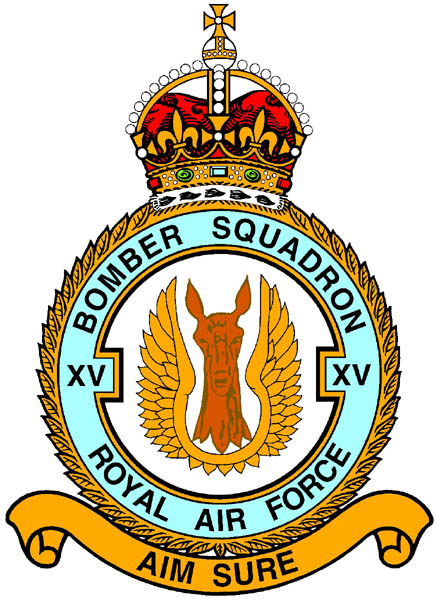
Short Stirling
mk. III
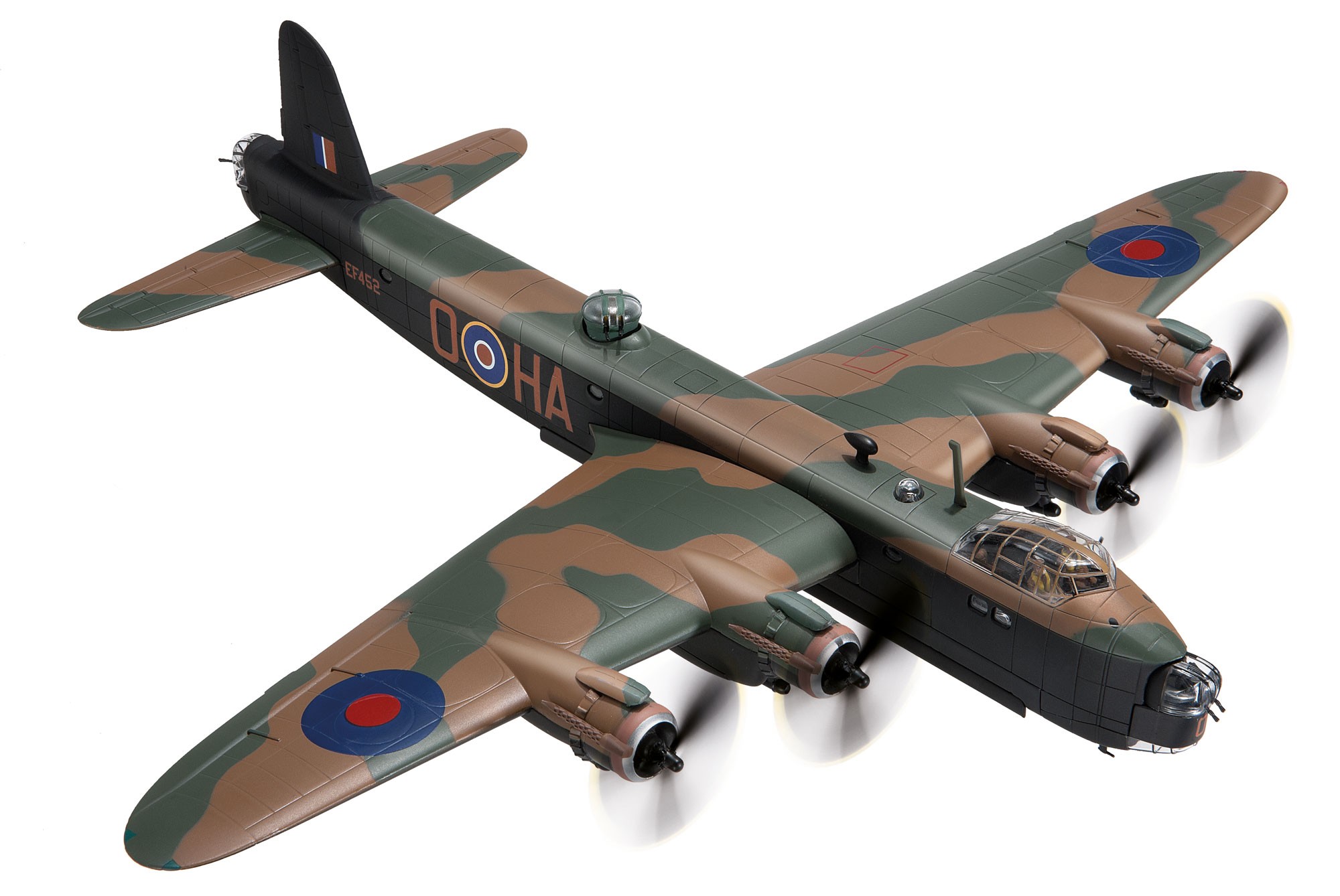 |
Stirling Mk III
BK657
The following relics are from
Short Stirling III Serial Number BK657
It Crashed at 02.15 on the
morning of 27th April 1943 at Portengen near Utrecht in Holland
Stirling BK657 took off from
RAF Mildenhall in Sussex at 18.46 on the 26th April 43 on a
bombing mission to Duisburg
It was on the outbound journey
when it was shot down by a Night fighter.
Pilot Officer R. Watson was
injured during the crash and spent his time in hospital before
being repatriated on the SS Leticia. He arrived at Liverpool on
the 2nd February 1945
Sergeant W.A.Spencer, Sergeant
W.A.Dyson, Sergeant H.L.Phillips and Flight Sergeant K.L.Bearnes
were all taken as Prisoners of War
Sergeant C.M.M.Mora managed to
survive the crash and escaped
Sergeant G.C.Whittaker is believed to have bailed out but he died of his
injuries before he could be found. He is Buried at the
Amersfoort General Cemetery
He is Buried in Plot 13. Row
5. Grave 98
The Recovery
of Stirling BK657
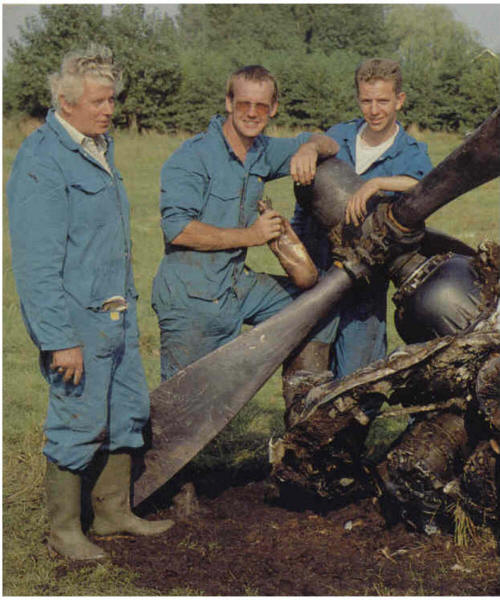
|
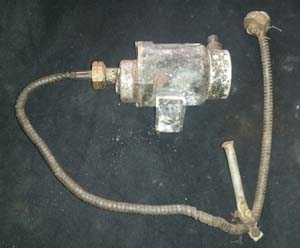
Please Click on
the Pictures to Enlarge |
Stirling Mk III
BK657 Tacho Drive Generator (page 4 relics 1)
Here we have the Tacho Drive
Generator that was connected to the engine to show the engine
revs in the cockpit
It still as the cable that was
attached to rev counter in the cockpit.
Out of stock more wanted please
contact me
|
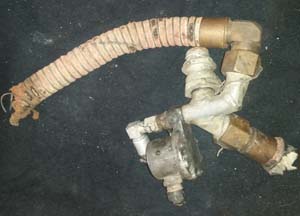
Please Click on
the Pictures to Enlarge |
Stirling Mk III
BK657 Fuel Sender Unit (page 4 relics 3)
Here is the Fuel Sender Unit. It is
still attached to some fuel lines and pipes
The Serial Number of the
Sender Unit is 30080/41
£135


|
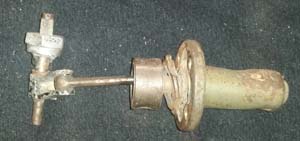
Please Click on
the Pictures to Enlarge
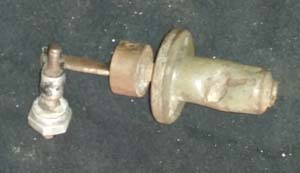 |
Stirling Mk III
BK657 Fuel Tank Sender Unit (page 4 relics 4)
Here is what I believe to be is the
Fuel Tank Sender Unit as used to tell how much fuel is in the
tank.
The part number reads
3-2084.02-02
£55


|
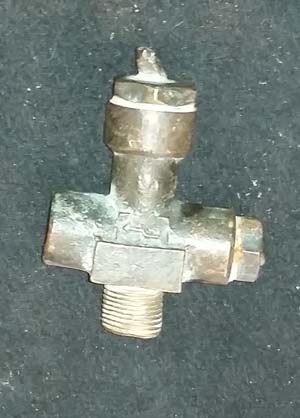
Please Click on
the Pictures to Enlarge |
Stirling Mk III
BK657 Oxygen Connector 1 (page 4 relics 5)
Here is a brass connector as used in
the oxygen system
£55


|
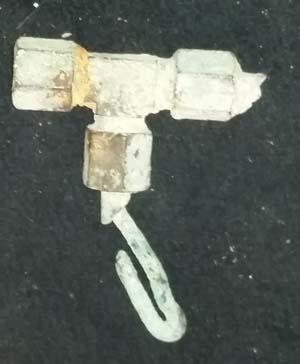
Please Click on
the Pictures to Enlarge |
Stirling Mk III
BK657 Oxygen Connector 2 (page 4 relics 6)
Here is a brass connector as used in
the oxygen system
£45


|
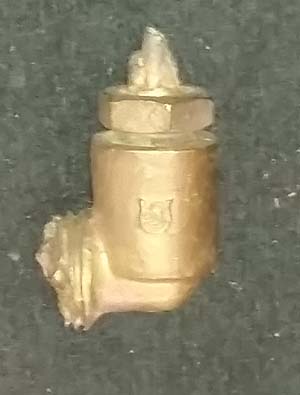
Please Click on
the Pictures to Enlarge |
Stirling Mk III
BK657 Oxygen Connector 3 (page 4 relics 7)
Here is a brass connector as used in
the oxygen system
£45


|
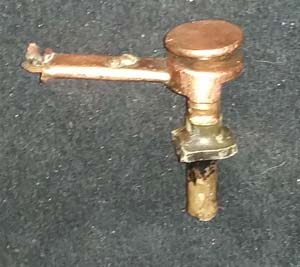
Please Click on
the Pictures to Enlarge |
Stirling Mk III
BK657 Electrical Connector 1 (page 4 relics 8)
Here is a brass connector as used in
the Electrical system
£45


|
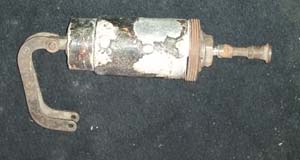
Please Click on
the Pictures to Enlarge
 |
Stirling Mk III
BK657 Actuator (page 4 relics 10)
This is an actuator that was used in
the aircraft
An actuator
is a type of motor that is responsible for moving or controlling
a mechanism
£55


|
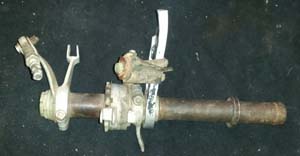
Please Click on
the Pictures to Enlarge
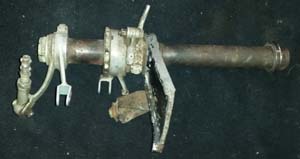
|
Stirling Mk III
BK657 Control Assy (page 4 relics 11)
Here is part of the control Assy
of BK657
It has Part
Number ST681103/4 on the bracket attached and FB95678-S/3 on one
of the arms
£275


|
|
Please Click on
the Pictures to Enlarge
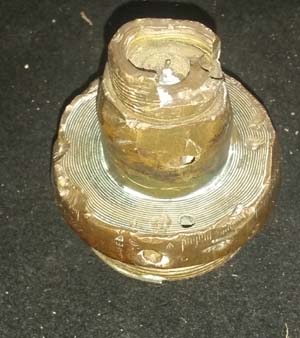
|
No.211 Time Fuze (page 4 relics 12)
Here is a No. 211 TimeFuze Used in
the 25 Pounder QF Field Gun
This was found along with the
Wreckage of BK657
The setting numbers can be
clearly seen on the side of the fuse
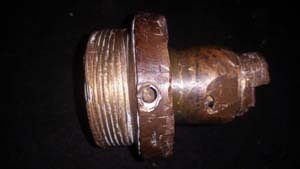
£55


|
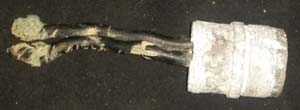
Please Click on
the Pictures to Enlarge |
Stirling Mk III
BK657 Electrical Plug (page 4 relics 13)
Here is a Plug from the electrical
system of BK657
Part Number 1239-1-2
£35


|
|
